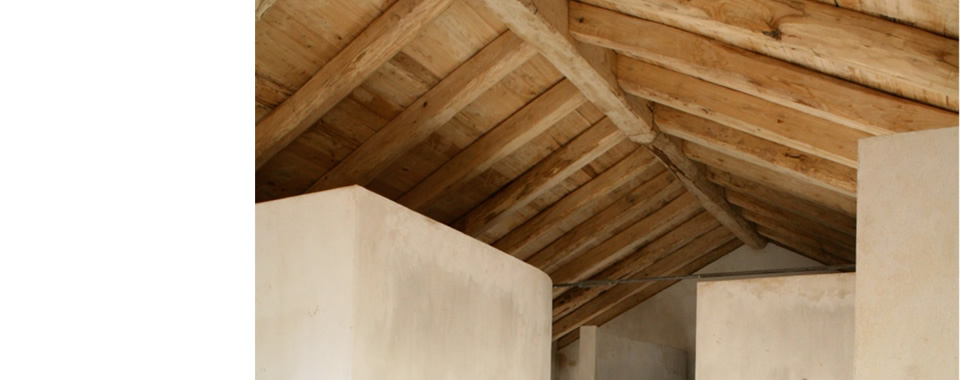

Score - Sustainable Construction in Rural and Fragile Areas for Energy efficiency
Guidelines for Integrated territorial Planning:
Photovoltaic
The following guidelines come from a deep analysis of case studies, norms, and regulations, relating at both national and regional levels. This analysis is summarized in a card that can be downloaded in French language.
PV technology can transform solar energy into electricity. There are two main technologies:
-
Poly-crystalline and mono (blue cell), the most common in the building for ensuring better performance,
-
Thin cells or amorphous, older technology, less efficient but has the advantage of also capturing diffuse light (cloudy weather, North orientation, ...). This cheaper alternative can be installed on flexible substrates, and accept more complex shapes.
The principle is simple, photovoltaic cells are installed in series on a panel, the panels are then installed also in series on a building. Electricity produced go through an inverter before being used directly or fed into the grid or stored in batteries.
This solution, combined with a reduction approach of needs in the building, is one of the simplest ways to achieve positive energy buildings, which produce more energy than they consume for operating.
The environmental impact is low, in 2 to 3 years, the energy consumed in their manufacture is repaid through energy savings.
Their lifespan is at least 30 years, the environmental impact is strongly positive.
The investment cost has decrease sharply in recent years. Each country has set up special feed-in tariff, more or less attractive, with a more or less binding (insertion architectural in France ...).
On economic efficiency, this electricity will be in 2013 in Italy cheaper than the one produced by the network and in 2020 in Germany. In France it may be a little longer due to the specificity of the nuclear because the cost is less important.
At that date (mid-2012) the installation of photovoltaic panels is still a worthwhile investment in France especially for small powers (on the scale of housing).
The main challenge is to "integrate" these panels to be eligible for a feed-in tariff more important. It is also important to develop technologies providing all safeguards in term of integration (waterproofing,…), as well as qualified installers.
Indication for the bio-construction action plan
Pursuant to the guidelines written above, are here synthetically reported the criteria/examples for pilot projects to be financed in MED territory, in relation with the specific treated theme. These criteria/examples, together with the ones resulting from all the themes of eco-construction tool matrix, will make up a Bio-construction Action Plan for each partner countries.
Today many European manufacturers offer photovoltaic solutions. This technology, in addition to come from a renewable source, is also creating employment.
Even if most of the cells (basic component of photovoltaic technology) are manufactured outside of Europe, this sector is great employer: researchers to increase yields, industrialists to turn them into panels and especially fitter and people for maintenance are always from the country of installation. 78% of the cost of solar is used to create jobs locally.
These two reasons, strong sunlight and job creation, should be enough to develop programs in order to support the installation of these technologies.
Conditions must still be implemented in order not to distort existing buildings or new one and especially not consume space (farmland) to install these panels.
Possible criteria for MED bio-housing quality certificate
Pursuant to the guidelines written above, are here synthetically reported the criteria/examples for pilot projects to be financed in MED territory, in relation with the specific treated theme. These criteria/examples, together with the ones resulting from all the themes of eco-construction tool matrix, will make up a Bio-construction Action Plan for each partner countries.
Certifications applicable in France are French certification HQE (Haute Qualité Environnementale), English one (BREEAM), American LEED and local certification as Qualité Environnementale on Région Rhône-Alpes or démarche BDM (Bâtiment Durable Méditerranéen) in region PACA.
These certifications are primarily based on performance and not mean to achieve it. However, some credits could be subject to the completion of a feasibility study on the use of photovoltaic energy. Modulation of these credits could be based on integration of these systems within the site.
Case studies
The case study relative to “photovoltaic” is given inside the card in French language that can be downloaded below, notably in “Plateforme technique de l’Arbois ”
